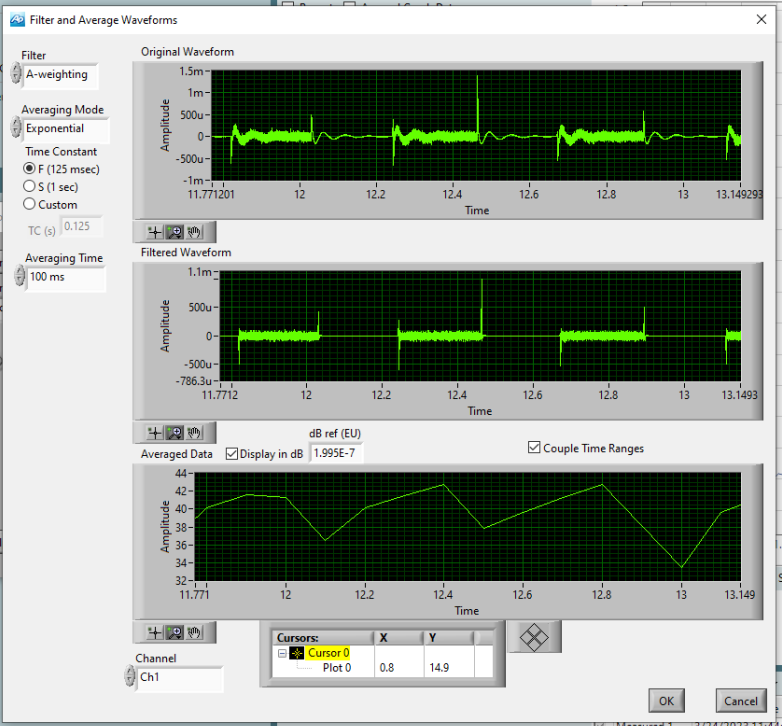SLAAED0 March 2024 TAS2764 , TAS2780 , TAS2781
- 1
- Abstract
- Trademarks
- 1 Introduction
- 2 Measurement Methodology
- 3 Introduction to Noise-gate and Pop in Class-D Amplifiers
- 4 Causes of Pop in TAS27xx family of Class-D Amplifiers
- 5 Click and Pop Using TAS27xx
-
6 Click and Pop Measurement Technique Using
AP v6.0. 2
- 6.1 Measurement Setup
- 6.2 Filter Settings
- 6.3 Data Capture Settings
- 6.4 Auto Range Settings for Pop Measurement
- 6.5 ASI or I2S Configurations for Pop Measurement
- 6.6 APx Sound Level Meter Utility
- 6.7 Data Acquisition
- 6.8 Interpreting Click and Pop Waveforms
- 6.9 Post Processing of AP Waveforms
- 6.10 A-Weighted Click and Pop Numbers
- 6.11 Exporting the A-Weighted Numbers
- 7 Noise-Gate Pop and Measurement Technique Using APx
- 8 Configuring TAS2764 for Improved Click and Pop Noise Performance
- 9 Summary
- 10References
6.10 A-Weighted Click and Pop Numbers
For the click and pop measurement, only the Filtered Waveform section is important. You can discard the Averaging Mode, Averaging Time, and Averaged Data sections as these are not relevant to the click and pop measurement. Please make sure to choose A-weighting as Filter option in the window. This applies the A-Weighting filter on the Original Waveform and the resulted A-Weighted Waveform appears in the Filtered Waveform section. In Figure 6-14, zoom in around the Maximum peak level, and analyze both the original and A-weighted waveform outputs.
The original waveform is displaying a max peak level of approximately 1.4mV (similar to the capture in Measurement Recorder Window Output). At the same instance, the A-weighted filtered waveform displays a max peak level of approximately 1.1mV.
 Figure 6-14 Filter and Average Waveform
Window – Zoomed Around Max. Peak Level
Figure 6-14 Filter and Average Waveform
Window – Zoomed Around Max. Peak Level